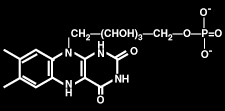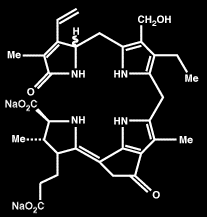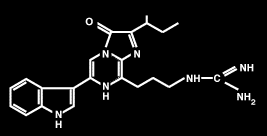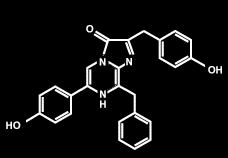![]()

|
Luciferin is the basic substrate of any bioluminescent reaction. These are the major examples of marine luciferins. |
|
|
Bacterial luciferin is a reduced riboflavin phosphate (FMNH2, pictured here) which is oxidized in association with a long-chain aldehyde, oxygen, and a luciferase.
|
 |
|
Dinoflagellate luciferin is thought to be derived from chlorophyll, and has a very similar structure. In the genus Gonyaulax, at pH 8 the molecule is "protected" from the luciferase by a "luciferin-binding protein", but when the pH lowers to around 6, the free luciferin reacts and light is produced. A modified form of this luciferin is also found in herbivorous euphausiid shrimp, perhaps indicating a dietary link for the acquisition of luciferin.
|
 |
| Vargulin or Cypridina-type luciferin is found in the ostracod ("seed shrimp") Vargula and Cypridina, and is also used by the midshipman fish Porichthys. Here there is a clear dietary link, with fish losing their ability to luminesce until they are fed with luciferin-bearing food. It has been shown that ostracods synthesize this molecule from the amino acids tryptophan, isoleucine, and arginine. |
 |
| Coelenterazine is the most "popular" of the marine luciferins, found in a variety of phyla. This molecule can occur in luciferin-luciferase systems, and is famous for being the light emitter of the photoprotein "aequorin". |  |
|
Firefly luciferin is used in a luciferin-luciferase system that requires ATP as a cofactor. Because of this, it can be used as a bio-indicator of the presence of energy or "life". |
 |
Additional reading:
J.W. Hastings. 1983. "Biological diversity, chemical mechanisms, and the evolutionary origins of bioluminescent systems." Journal of Molecular Evolution. v. 19: p.309-321.
 . | Return to the Bioluminescence Info Page.
. | Return to the Bioluminescence Info Page.